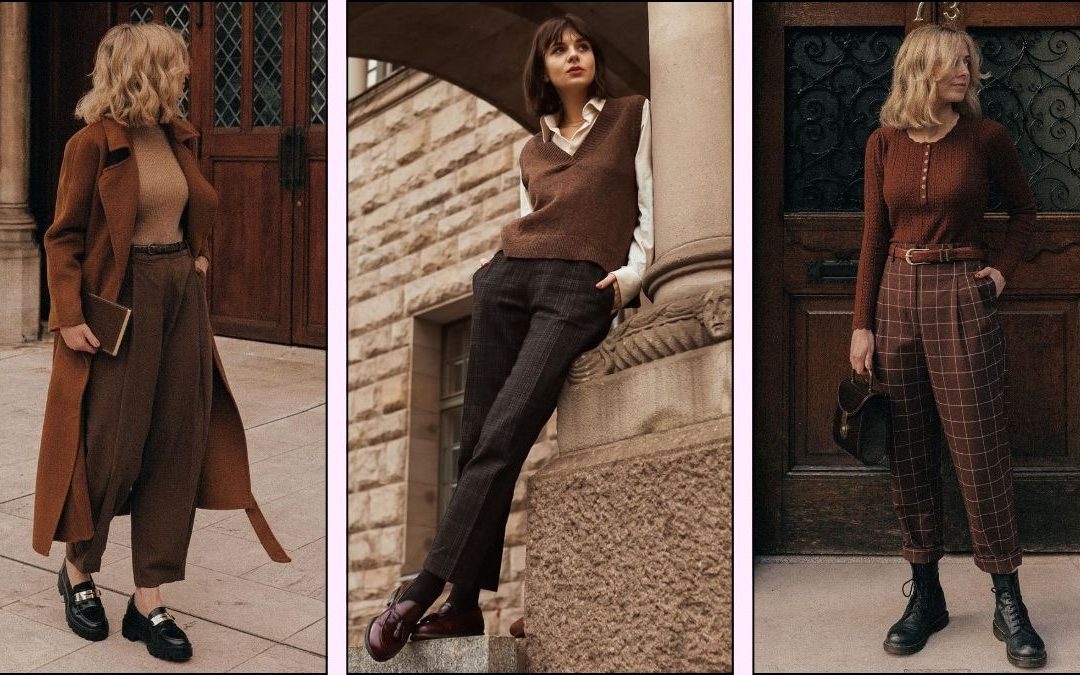Oman today_ In recent years, the Dark Academia style has gained significant popularity on social media. It first emerged as a trend in early 2020, but even after fading from the trend cycle, it has remained appealing due to its elegance and practicality, maintaining a devoted following. Dark Academia is not limited to clothing; it represents a complete lifestyle, encompassing an appreciation for classic literature, traditional décor, and historical culture.
What is Dark Academia?
This style is more than just a way of dressing—it embodies a particular outlook on life. Enthusiasts of Dark Academia often have a deep interest in classic literature, history, philosophy, and traditional academic environments. Visually, the style is characterized by formal, understated clothing, including wool coats, tailored trousers, turtleneck sweaters, and dark tones such as black, brown, or gray.
A defining feature of Dark Academia is its nostalgic attachment to intellectual spaces of the past. The style encourages deep study, analysis of historical texts, and the experience of quiet, reflective moments. For many, Dark Academia has evolved from a mere trend into a part of their intellectual identity and lifestyle.
Origins and History
Although the term “Dark Academia” gained popularity more recently, particularly on Tumblr, its intellectual and visual roots are much older. Influences from Romanticism, Gothic literature, and traditional European universities have all shaped the aesthetic. Works like Donna Tartt’s The Secret History or the film Dead Poets Society vividly illustrate the atmosphere and values of this style: students immersed in study and reflection, closed academic spaces, intellectual competition, and occasional mental pressure and solitude.
The term first appeared on Tumblr in 2015 and gradually evolved into a full-fledged lifestyle encompassing clothing, literary and cinematic tastes, and even personal interior design. Online, the style became a way to express personal preferences and a response to superficiality and the fast-paced digital life.
Characteristics of Dark Academia Style
Dark Academia combines classic, formal, and academic elements with a darker, nostalgic mood, creating a distinct visual and intellectual identity.
Colors: The color palette primarily includes dark, neutral, and earthy tones such as black, brown, gray, olive, and charcoal. Occasionally, limited accents of burgundy, burnt orange, or navy are used.
Fabrics and Textures: Classic materials like wool, cotton, velvet, and leather are common, both for their traditional appearance and their association with academic attire.
Clothing Items: Key pieces include long coats, turtleneck sweaters, wool or pleated skirts, straight-cut trousers, collared shirts, and classic leather shoes like Oxfords or loafers.
Accessories: Popular accessories include framed glasses, leather bags, simple or vintage watches, notebooks, and classic books. Antique jewelry, brooches, and other nostalgic items are also common.
Lifestyle and Behavior: Dark Academia values study, deep thinking, silence, and mindful solitude. Enthusiasts tend to have an interest in classic literature, history, philosophy, and the arts, seeking intellectual depth. Preferred environments include old libraries, quiet cafés, traditional academic spaces, and homes with dark, classic décor.
How to Build a Dark Academia Style
Colors: Stick to dark, classic tones such as black, gray, brown, charcoal, olive, and navy. Avoid bright or flashy colors; the palette should convey depth, quiet, and seriousness.
Layering: Wear clothing in layers, such as a shirt under a sweater or a jacket over a cardigan.
Texture Mixing: Combine fabrics like velvet, wool, leather, and cotton to add richness and variation.
Patterns: Use classic patterns like small plaids or stripes in dark shades.
Accessories: Add a leather bag or backpack, a simple watch, framed glasses, notebooks, or classic books to complete the look.
By following these guidelines, it is possible to achieve a Dark Academia style thoughtfully and affordably. The essence of this style lies in the harmony between appearance, lifestyle, and intellectual mindset, rather than in expensive or extravagant clothing.

